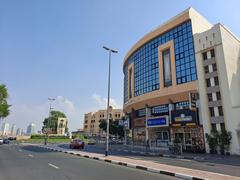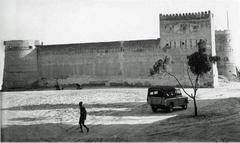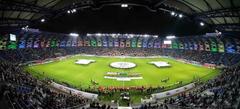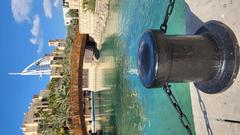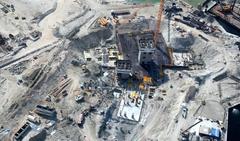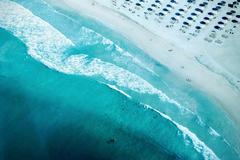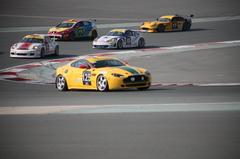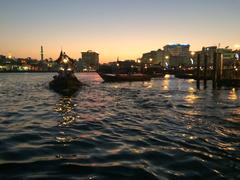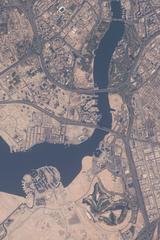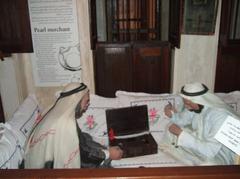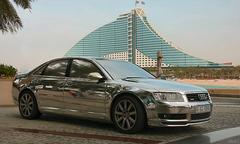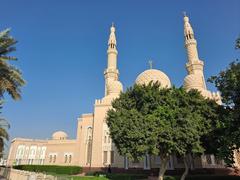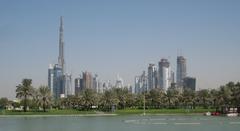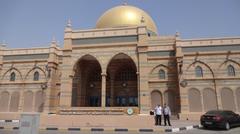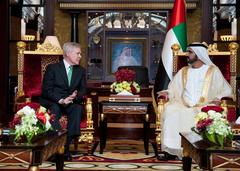Visiting Al Garhoud Bridge: History, Tips, and Visitor Information
Publication Date: 24/07/2024
Introduction to Al Garhoud Bridge
Discover the rich history and modern significance of جسر القرهود (Al Garhoud Bridge), a vital transportation link and an iconic landmark in Dubai. Constructed in 1976, this bridge has played a pivotal role in connecting the historic districts of Deira and Bur Dubai, facilitating economic growth and urban development (dxbnewsnetwork.com). The Al Garhoud Bridge is not just a functional structure but an architectural marvel, reflecting Dubai’s commitment to progress and innovation. With a capacity to handle approximately 9,000 cars per hour, it is a crucial component of Dubai’s transportation infrastructure (almajidproperty.com). Beyond its architectural and functional significance, the bridge serves as a cultural crossroads, witnessing the convergence of diverse communities and the ebb and flow of history. Whether you’re a resident or a visitor, this guide offers comprehensive insights into the bridge’s history, significance, and practical tips for making the most of your visit.
Table of Contents
- [Introduction](#introductionintroduction)
- [History and Significance of جسر القرهود (Al Garhoud Bridge)](#history-and-significance-of-جسر-القرهود-al-garhoud-bridgehistory-and-significance-of-جسر-القرهود-al-garhoud-bridge)
- [Historical Roots](#historical-rootshistorical-roots)
- [Architectural Marvel](#architectural-marvelarchitectural-marvel)
- [Symbol of Progress and Innovation](#symbol-of-progress-and-innovationsymbol-of-progress-and-innovation)
- [Strategic Importance](#strategic-importancestrategic-importance)
- [Cultural Crossroads](#cultural-crossroadscultural-crossroads)
- [Future Prospects](#future-prospectsfuture-prospects)
- [Visitor Tips](#visitor-tipsvisitor-tips)
- [Best Time to Visit](#best-time-to-visitbest-time-to-visit)
- [Photography](#photographyphotography)
- [Nearby Attractions](#nearby-attractionsnearby-attractions)
- [Transportation](#transportationtransportation)
- [Visiting Hours and Tickets](#visiting-hours-and-ticketsvisiting-hours-and-tickets)
- [Special Events and Guided Tours](#special-events-and-guided-toursspecial-events-and-guided-tours)
- [FAQ](#faqfaq)
- [Conclusion](#conclusionconclusion)
- [Sources](#sourcessources)
Introduction
Discover the rich history and modern significance of Al Garhoud Bridge, one of Dubai’s most iconic landmarks. This article will explore the bridge’s historical roots, architectural marvel, and strategic importance, along with practical visitor tips to enhance your experience.
History and Significance of جسر القرهود (Al Garhoud Bridge)
Historical Roots
The Al Garhoud Bridge, known locally as جسر القرهود, is a pivotal structure in Dubai’s urban landscape. Constructed in 1976, it was the second bridge to span the Dubai Creek, following the Al Maktoum Bridge. The bridge’s construction marked a significant milestone in Dubai’s journey towards modernization and economic development. At the time, Dubai was transitioning from a modest trading post to a burgeoning metropolis, and the need for enhanced connectivity was paramount. The Al Garhoud Bridge was a bold step in bridging the physical divide between the historic districts of Deira and Bur Dubai, fostering economic growth and urban development (dxbnewsnetwork.com).
Architectural Marvel
The Al Garhoud Bridge is not just a functional structure but also an architectural marvel. Its design reflects the elegance and forward-thinking vision of Dubai’s urban planners. The bridge was constructed to accommodate the increasing traffic demands of a rapidly growing city. It has the capacity to handle approximately 9,000 cars per hour during peak times, making it a critical component of Dubai’s transportation infrastructure (almajidproperty.com).
Symbol of Progress and Innovation
Beyond its architectural significance, the Al Garhoud Bridge symbolizes Dubai’s commitment to progress and innovation. The bridge has witnessed the city’s transformation over the decades, evolving alongside Dubai’s skyline and infrastructure. It stands as a living testament to Dubai’s heritage and resilience, reminding residents and visitors alike of the city’s enduring spirit of innovation and progress (dxbnewsnetwork.com).
Strategic Importance
The strategic importance of the Al Garhoud Bridge cannot be overstated. It serves as a vital lifeline for Dubai, facilitating the seamless flow of traffic between the eastern and western shores of the Dubai Creek. The bridge’s role in enhancing connectivity and accessibility has been crucial in supporting Dubai’s economic activities and urban development initiatives. As Dubai continues to evolve and expand, the significance of the Al Garhoud Bridge will only increase, underscoring its role as a critical infrastructure asset (dxbnewsnetwork.com).
Cultural Crossroads
The Al Garhoud Bridge is more than just a physical structure; it is a cultural crossroads where diverse communities converge and connect. The bridge has witnessed the ebb and flow of history, serving as a silent witness to the stories of generations of residents and visitors who have traversed its lanes. From the bustling souks of Deira to the vibrant waterfront of Bur Dubai, the bridge has been an integral part of the vibrant tapestry of life in Dubai (dxbnewsnetwork.com).
Future Prospects
Looking towards the future, the Al Garhoud Bridge remains an enduring symbol of hope, progress, and possibility. Plans for its future include integrating eco-friendly features, enhancing connectivity, embracing technological advancements, and fostering cultural and recreational integration. As Dubai continues to chart its course towards a sustainable and inclusive future, the bridge will play a pivotal role in shaping the city’s present and future, ensuring that Dubai remains a global beacon of opportunity and prosperity (dxbnewsnetwork.com).
Visitor Tips
For tourists visiting the Al Garhoud Bridge, there are several tips to ensure a memorable experience:
Best Time to Visit
The best time to visit the bridge is during the early morning or late evening when the temperatures are cooler. This is especially important during the summer months when temperatures can soar up to 50°C (dubaitravelplanner.com).
Photography
The bridge offers stunning views of the Dubai Creek and the city’s skyline. Photographers will find the bridge an excellent spot for capturing the essence of Dubai’s blend of old and new.
Nearby Attractions
Visitors can explore nearby attractions such as the Dubai Creek, Deira City Centre, and the Dubai Festival City. These locations offer a mix of shopping, dining, and entertainment options (almajidproperty.com).
Transportation
The bridge is well-connected by public transportation, including the Dubai Metro and several bus routes. The GGICO Metro Station is a convenient access point for visitors (almajidproperty.com).
Visiting Hours and Tickets
While the bridge itself is open 24/7, some nearby attractions have specific visiting hours and may require tickets. Check the official websites of these attractions for the most accurate information.
Special Events and Guided Tours
The Al Garhoud Bridge hosts various special events throughout the year, such as cultural festivals and light shows, which offer unique experiences for visitors. Guided tours are available, providing deeper insights into the bridge’s history and significance. Check with local tour operators for schedules and booking information.
FAQ
-
What are the visiting hours for Al Garhoud Bridge? The bridge itself is accessible 24/7, but nearby attractions may have specific visiting hours.
-
Is there an entry fee for Al Garhoud Bridge? There is no entry fee to access the bridge, but some nearby attractions may require tickets.
-
How can I get to Al Garhoud Bridge? The bridge is well-connected by public transportation, including the Dubai Metro and bus routes. The GGICO Metro Station is a convenient access point.
-
Are there any special events held at Al Garhoud Bridge? Yes, the bridge hosts various special events throughout the year, such as cultural festivals and light shows.
Conclusion
The Al Garhoud Bridge is more than just an architectural marvel; it is a symbol of Dubai’s ambition and a beacon of hope for the future. As it stands tall against the backdrop of the ever-changing skyline, it reminds us of the power of human creativity to shape the world around us. Whether you are a resident or a visitor, the Al Garhoud Bridge offers a unique glimpse into the heart of Dubai’s past, present, and future. For more updates, download our mobile app Audiala, check out other related posts, or follow us on social media (dxbnewsnetwork.com).
